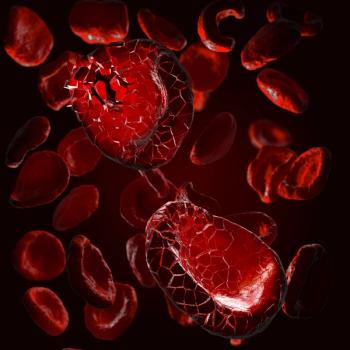
- Oncology Vol 28 No 4_Suppl_1
- Volume 28
- Issue 4_Suppl_1
(S033) Dose-Escalated Radiation Therapy With or Without Short-Course Androgen Deprivation for Intermediate-Risk Prostate Cancer
To investigate outcomes in intermediate-risk prostate cancer patients receiving dose-escalated external beam radiation therapy (RT) with or without short-course androgen deprivation therapy (ADT).
Elliot Navo, MD, David Schwartz, MD, Kwang Choi, MD, Marvin Rotman, MD, David Schreiber, MD; Department of Radiation Oncology Veterans Affairs, New York Harbor Healthcare System; Department of Radiation Oncology, SUNY Downstate Medical Center
Background and Purpose: To investigate outcomes in intermediate-risk prostate cancer patients receiving dose-escalated external beam radiation therapy (RT) with or without short-course androgen deprivation therapy (ADT).
Materials and Methods: This study comprised 203 intermediate-risk prostate cancer patients who were treated at a single institution to a dose of ≥ 7,560 cGy from 2003–2010. Of these patients, 62 (30.5%) received ADT in addition to their RT. Comparisons of patient characteristics were performed using chi-square analysis. Biochemical recurrence, distant metastatic-free survival (DMPFS), prostate cancer-specific survival (PCSS), and overall survival (OS) were analyzed using the Kaplan-Meier method. Multivariate Cox regression was used to analyze the impact of covariates on biochemical outcomes.
Results: The median follow-up was 62 months, and the median duration of ADT was 6 months. Patients with a prostate specific antigen (PSA) above 10 ng/mL were more likely to receive ADT than those with PSA values of 10 ng/mL or less (P < .001). There was a trend toward reduced ADT usage for those who were aged younger than 70 years compared with those who were older (P = .10), as well as for those who were treated with further dose escalation above 7,560 cGy (P = .06). There were no differences in ADT use based on race or the Gleason score of the biopsy. There were a total of 33 biochemical failures (16.3%), and the median time to biochemical failure was 42 months (range: 4–98 mo). Biochemical failure occurred in 4 of the 62 patients who were treated with RT and ADT (6.5%) and in 19 of the 141 patients who were treated with RT alone (13.4%). The 6-year biochemical control was 89.2% for those receiving RT plus ADT vs 76.7% in those receiving RT alone (P = .02). There were three distant failures-two in patients who received RT alone and one in a patient who received RT + ADT; the time to distant failure was 22 and 47 months for the patients who received RT alone, respectively, and was 109 months for the patient who received RT + ADT. The 6-year DMPFS, PCSS, and OS rates were 98.2%, 99.0%, and 82.3% for those receiving RT alone and 100%,100%, and 72.3% for those receiving RT + ADT, respectively (respective P values = .91, .50, and .67). On multivariate analysis, only ADT use was associated with improved biochemical outcomes (hazard ratio [HR] = 0.24; 95% confidence interval [CI], 0.08–0.70; P = .01), while perineural invasion was associated with worse biochemical outcomes (HR = 2.94; 95% CI, 1.36–6.34; P = .01).
Conclusions: Dose-escalated RT and short-course ADT result in improved biochemical outcomes for intermediate-risk prostate cancer patients. Perineural invasion appears to be an important prognostic factor that portends worse biochemical control.
Proceedings of the 96th Annual Meeting of the American Radium Society -
Articles in this issue
Newsletter
Stay up to date on recent advances in the multidisciplinary approach to cancer.


















































































